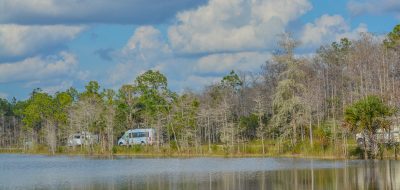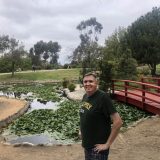Barbecue sauce isn’t the only valuable liquid flowing in Luling. The town is dotted with oil pumps that still move the Texas black gold from the ground.

The Central Texas Oil Patch Museum pays tribute to the area’s oil industry. © Rex Vogel, all rights reserved
Once known as “the toughest town in Texas”, Luling was established in 1874 as the far western stop of the Sunset Branch of the Southern Pacific Railroad. The developing importance of the town as a cattle-raising center, combined with the importance of the railroad as a shipping point, allowed the town to grow and prosper. Being the northern terminus of a freight road to Chihuahua, Mexico added to its stature.
As the cattle drives to the railroad head decreased, Luling survived by turning to its rich soil and hardy folk. Luling came to be known throughout the region as an agriculture center with cotton, corn, and turkeys as its principal products.
Cotton ruled the local economy until the momentous year of 1922.
On August 9th of that year, Edgar B. Davis’ Rafael Rios No.1 blew in, opening an oilfield 12 miles long and two miles wide. The Rios No. 1 proved to be a part of one of the most significant fields discovered in the Southwest.
Thousands of oil field workers descended upon the little community. They filled every available room and constructed a tent city, called Rag Town, along the railroad tracks. By 1924, the field was producing 11 million barrels of oil per year.
Almost overnight, the railroad town of Luling went from a population of 500 to an oil-boom town of 5,000 people. Tents filled every vacant area as roughnecks and their families set-up housekeeping. Work was hard and living even harder, but the dream that unfolded was a microcosm of Texas history-a time when a community of farmers and their families responded to the coming of the railroad, only to have their lives changed forever by the discovery of oil.

The Oil Patch Museum shares the history and illustrates the life and times of the Central Texas “Oil Boom in the Oil Patch”. © Rex Vogel, all rights reserved
Davis went on to become Luling’s resident philanthropist and established an agricultural foundations that continues to this day.
We stopped by the Central Texas Oil Patch Museum to explore the history of Luling during its early oil boom days.
To preserve the memories of Luling and honor the rich heritage, the Central Texas Oil Patch Museum was established in the historic Walker Brothers building located in the heart of the downtown business district.
This beautifully restored building is an historic landmark in itself. Established in 1885, it was a mercantile store, a place where cotton was financed and traded. One of the first buildings constructed in Luling, it played a central role in the town’s social fabric.
The spacious, two-story structure now showcases early oil-field machinery and memorabilia, displays of photographs that date back to 1910, and a scale replica of an old wooden oil derrick. The Oil Tank Theater presents a 20-minute film about Luling’s colorful history and current attractions.
The Oil Patch Museum is dedicated to the collection, restoration, and preservation of historic oil producing methods, accessories, and the people of the industry. Established to share the history with the public, the museum illustrates the life and times of the Central Texas “Oil Boom in the Oil Patch”.

The center of Luling lies along railroad tracks where oil field workers first pitched their tents—and freight trains continue to rattle on through. © Rex Vogel, all rights reserved
The museum shows the contrast of the tools and technology of the past with those utilized in the oil industry today. This collection traces the development of the oil industry, from the first strike in the nation to the social and economic impact on Central Texas.
The museum strives to demonstrate the struggles between the men and women who were the oil field pioneers and to create a better understanding of the process of oil exploration and production.
The Museum is a focal point of tourist traffic, with the Luling Area Chamber of Commerce Visitor’s Center located at its entrance. The facility also serves as a community hall where meetings, seminars, and entertainment are conducted for the benefit of the citizens.
There are almost two hundred oil well pump jacks within the city limits of Luling.
No industrial eyesores for this progressive community. The creative and artistic residents have created moveable art to decorate many of the wells along the highways and byways. The pump jacks are decorated as everything from an airplane to an orca and a football player to a cow jumping over the moon..
A map of the Pump Jack Tour is available at the Chamber.
Texas Spoken Friendly
Worth Pondering…
Words of wisdom from an Oklahoma Cowboy
Will Rogers was quite the cowboy, with all the wisdom of simple, honest folk. His words still ring with common sense today…
Will Rogers, who died in a 1935 plane crash with his best friend, Wylie Post, was probably the greatest political sage the country ever has known.
Enjoy the following:
Never miss a good chance to shut up.
Always drink upstream from the herd.
If you find yourself in a hole, stop digging.
You May Also Like
- Sisters on the Fly Have More Fun
- EverGreen Amped Named Best of Show
- Organizing Photos: Transfer Images to Computer
- Dutchman Infinity Named Best of Show
- Arizona State Parks Employ Homeless Veterans as Rangers
If you enjoy these articles and want to read more on RV travels and lifestyle, visit my website: Vogel Talks RVing.






